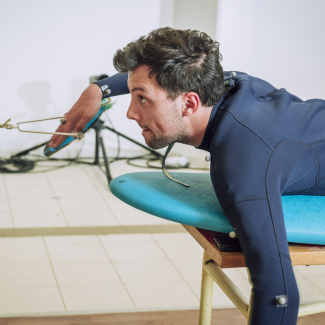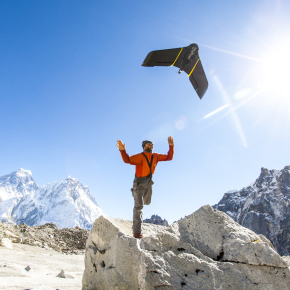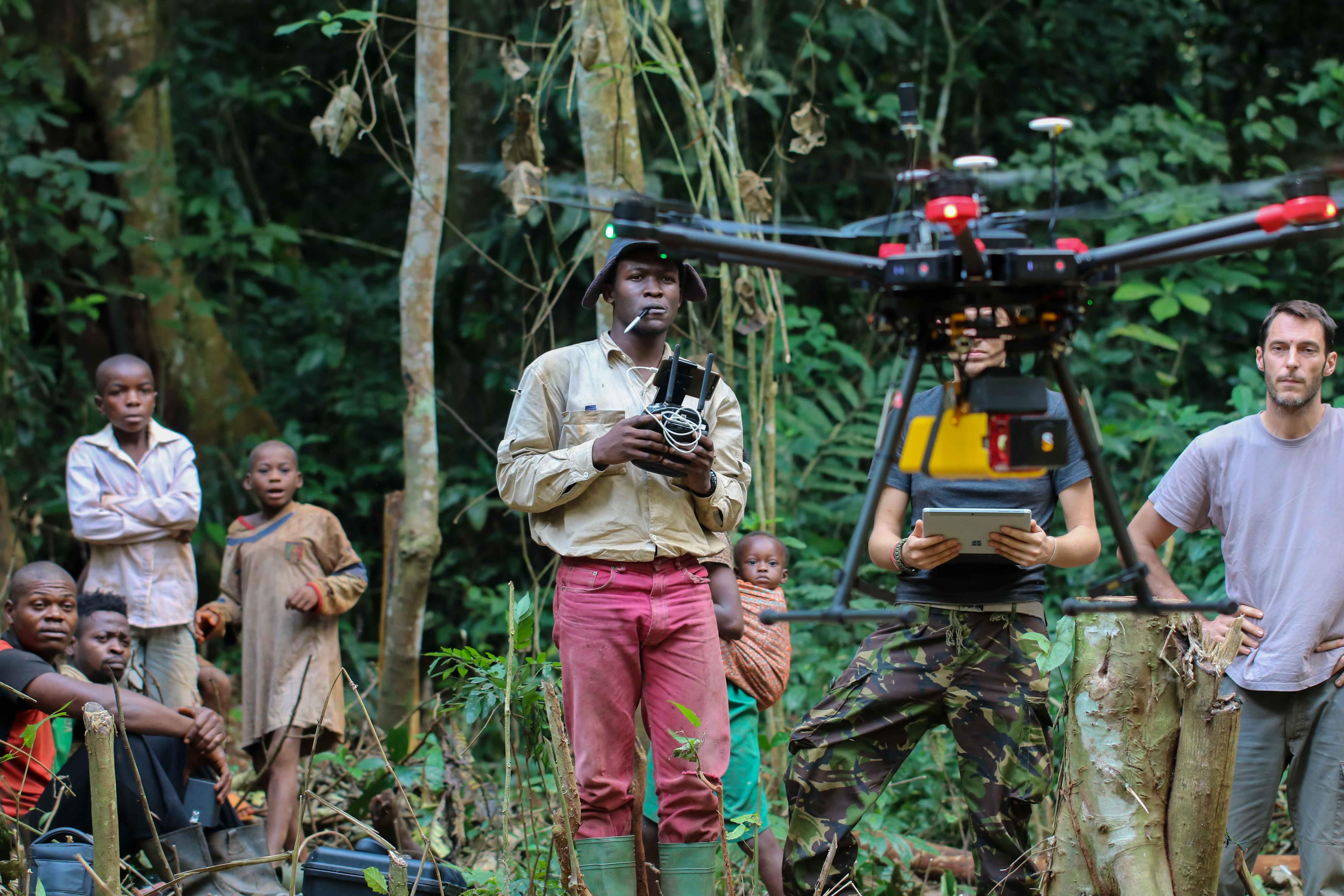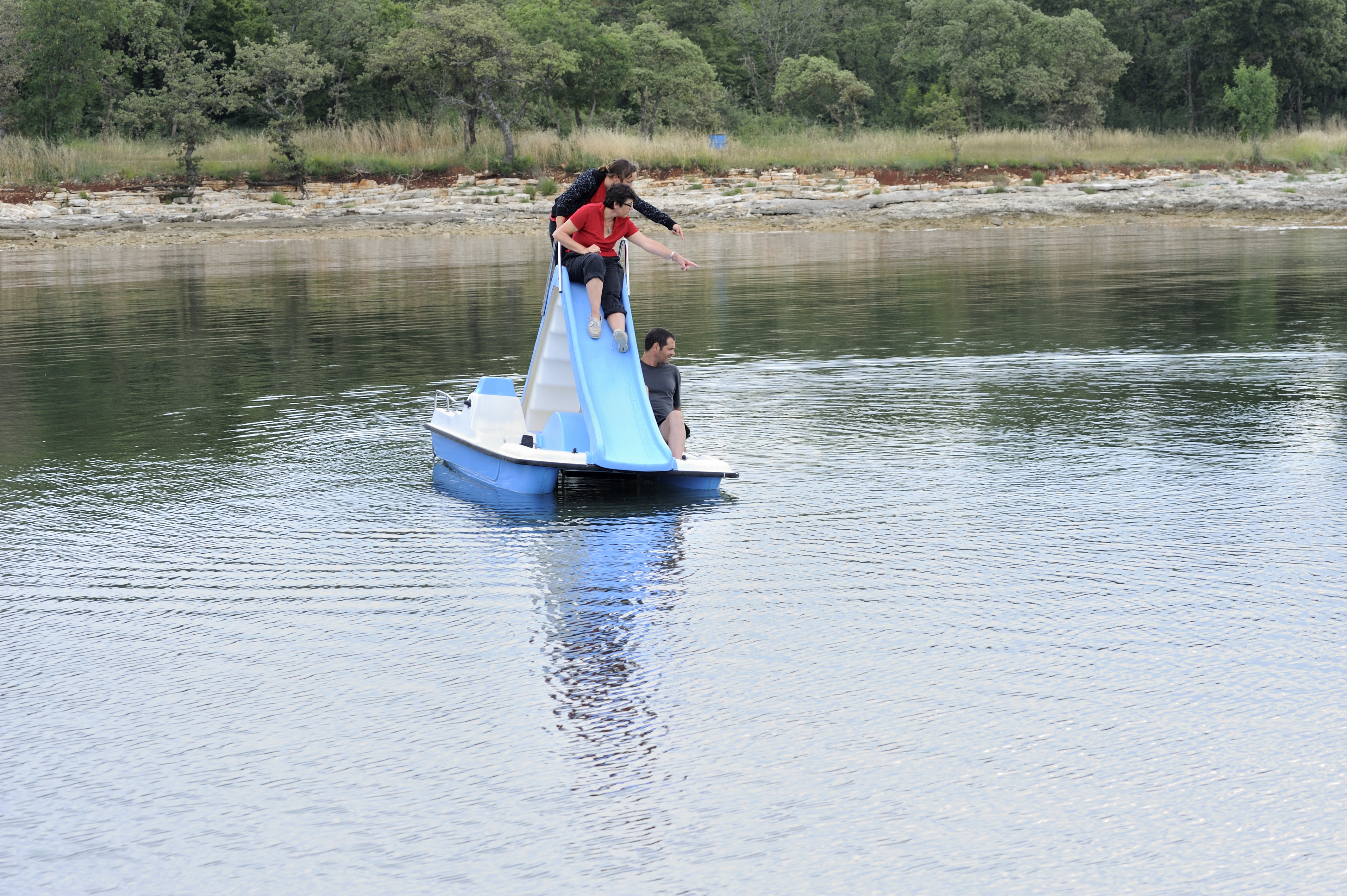
The CNRS's leading role in Drones for Research
The CNRS has officially been a registered operator of drones for the last eight years. This title is the result of a decade of work by the CNRS Drones Unit on structuring and professionalising pilots.
178 pilots, 243 flying crafts, 2000 flights a year. At first glance you might think these were the statistics for any airline but this one rightfully stands out in the French air landscape because it's… the CNRS!
In 2016 the French Civil Aviation Authority awarded the CNRS the status of 'UAS operator' (Unmanned Aircraft System" - literally: 'an aircraft system with no humans on board'), thus officially making the organisation a declared operator of drones1 . This was formal recognition of nearly a decade of use of these remotely piloted craft for scientific purposes managed by the organisation's Drones unit.
Multi-purpose tools
In around a decade, drones have become essential tools for acquiring new data in almost all scientific fields. Indeed scientists generally have been primarily won over by how easy it is to use these devices. Nicolas Barbier is a Research Institute for Development (IRD) researcher working at the Botany and Modelling of Plant Architecture and Vegetation laboratory2 and has been using drones since 2014. He recalls that this tool "very quickly proved itself indispensable" and replaced aerial campaigns because of the flexibility it offers for studying the tropical forests where his team works. Loïc Damelet, a photographer and CNRS research engineer at the Camille Jullian Centre3 , is amused when looking back at how he used to work before drones: "Back then, to take underwater photos I used to get on a pedalo which I'd added a kind of slide to that I'd climb up to take higher photos!" In 2013, Loïc Damelet changed techniques, developing his first drone during archaeological excavations on an underwater site in Croatia.
Of course drones can go higher than a researcher perched on a slide on a pedalo which gives access to unprecedented viewpoints. Loïc Damelet's laboratory is using a drone on land and sea to study the Greek and Roman archaeological site of Olbia in Hyères-les-Palmiers (Var region) because it is capable of spotting buildings under clear, shallow water and modelling them clearly and accurately. Overhead views cannot actually replace underwater photographs but the photographer explains that "the photomosaics we obtained help document the terrain in a way we never could before. They're an invaluable aid for structuring our operation, visualising scale changes and installing devices to ensure the divers' safety". Nicolas Barbier's team uses drones for similar reasons – to obtain "an intermediate scale view between the ground, observation towers and satellite views with a level of detail for each tree that we didn't have before". Ecologists taking an inventory of the vegetation in the middle of the Guianese jungle can now distinguish flowers, leaves and even their shadows to achieve their objective of measuring the amount of carbon this kind of forest can store as accurately as possible.
Drones can also provide new images that are otherwise invisible to the naked eye as well as this kind of fixed overhead views. Nicolas Barbier uses a whole range of equipment to assess different parameters of the forest. Laser drones are used to calculate the quantity of foliage while drones with multispectral cameras analyse the chemical properties of the leaves and a lidar provides three-dimensional characterisation of the forest massif. This variety of images combined with drones' hovering capacity also appealed to Lucile Rossi, a professor at the University of Corsica Pasquale Paoli's Environmental Sciences Laboratory4 . In her work as a forest fires specialist she previously studied fires from experimental ground platforms but then decided to follow fires in motion by putting put four cameras on board drones. Two were for the visible spectrum with the other two for the infrared spectrum, thus enabling the scientist to model the spread of fires from above.
The Drones unit – making scientific work easier
However, using drones in this way needs to be controlled and to comply with a regulatory framework. In the same way as land traffic is subject to a certain number of rules, French airspace includes a great number of sectors with restricted usage of drones or where their use is prohibited. Nicolas Barbier knows this subject inside out. He launches his drones every fortnight to monitor the long-term development of every tree in the area from the Paracou site which is right next to the Guiana Space Centre in Kourou. The latter is a strategic area so all image captures are forbidden. "Legally, it's a nightmare", he bluntly admits, "but fortunately, the CNRS has done the necessary to obtain the right authorisations" so drones can fly over the site and collect scientific data over the long term. The same applies to the Olbia site located along the runway at the Hyères-Le Palyvestre naval air base, just two kilometres from the end of the runway. Loïc Damelet's team worked with the military authorities to draw up a letter of agreement and thus obtain permission to fly in this zone, with the photographer from the Camille Jullian Centre explaining that "taking photos over the remains is no longer an issue". In both cases, these remote pilots and the 176 others authorised to use drones by the CNRS benefited from support from the organisation's Drones unit. This structure made up of two staff members was set up in 2016 by the CNRS's Security Department. It was initially intended to provide collective legal supervision for new remote pilots working for joint units under CNRS supervisory authority to avoid them from having to deal with the legislation individually. Ignace Cacciaguerra is responsible for regulatory compliance and confirms that "remote pilots at the CNRS are not isolated because the organisation provides them with legal cover and support for preparing missions".
The Drones unit aims to take this one step further by professionalizing what is a fast-growing sector to an even greater extent. The unit audits and advises researchers and also provides training in using drones. Loïc Damelet is the flight safety officer for his own unit which is the largest team of its kind at the CNRS with six remote pilots and five drones. He is therefore very much aware of the benefits of such training for the safety of equipment, pilots and third parties alike because this helps "prevent drones crashes and damage from them". This safety training is particularly beneficial in the high-risk zones his colleagues work in. Such zones include mountainous regions where rock faces can create interference and thus disrupt electronic programmes on board drones or alternatively dense conurbations like the area around the ancient theatre of Orange where falling drones could injure passers-by.
The CNRS's focus on safety can also benefit our local partnerships. For example, while working on the GOLIAT project developing tools for fire fighting and land use planning, Lucile Rossi created a tool that "processes radiometric infrared images using a mobile application or software to geolocate zones that are still hot and need monitoring for days or even weeks despite being hard to detect and locate from the ground". A patent is currently being filed for this product which will soon be made available free of charge to fire-fighting and land-use planning staff in Corsica facilitate their work fighting forest fires. To achieve this, Lucille Rossi was supported by the Drones unit and, although employed by a university, she acknowledges that "the CNRS is there to make our lives easier".
The CNRS has so many drones, pilots and three aircraft under its responsibility that the organisation can now pride itself on being French higher education and research's leading operator of drones and third overall nationally behind the SNCF and EDF. The Drones unit is justifiably proud of this status. "The rest of the Ministry envies our preparation capabilities and operational management – we're the only organisation with this kind of structure".
The Drones & Cap' technology network
The CNRS's use of drones is not limited to in-flight activities and their specific regulations. To facilitate the transfer of technology and knowledge between the different disciplines that use drones, the CNRS set up the Drones & Cap' technology network. This is made up of designers of UAVs and on-board instrumentation along with those who actually use these new tools for scientific investigation.
Notes
- As well as drones, the CNRS uses four aircraft for scientific observation. Three are at the National Centre for Meteorological Research (CNRS / Météo-France) in Toulouse while the fourth is in Rennes at the Institute of Electronics and Digital Technologies (CNRS / Centrale-Supélec / Insa Rennes / University of Nantes / University of Rennes).
- CNRS / CIRAD / INRAE / IRD / University of Montpellier.
- CNRS / Aix-Marseille University.
- CNRS / University of Corsica Pasquale Paoli.





